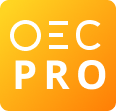Israel-Latvia Trade: In 2023, Israel exported $22.1M to Latvia. The main products that Israel exported to Latvia were Mirrors and Lenses ($3.27M), Fruit Juice ($1.85M), and Twine, cordage or rope; knotted netting, made up fishing nets and other made up nets, of textile materials ($1.39M). Over the past 5 years the exports of Israel to Latvia have decreased at an annualized rate of 5.48%, from $29.3M in 2018 to $22.1M in 2023.
In 2012, Israel exported services to Latvia worth $0, with being the largest in terms of value.
Latvia-Israel Trade: In 2023, Latvia exported $70.8M to Israel. The main products that Latvia exported to Israel were Wheat ($13.4M), Sawn Wood ($8.04M), and Special purpose motor vehicles ($5.63M). Over the past 5 years the exports of Latvia to Israel have increased at an annualized rate of 7.62%, from $49.1M in 2018 to $70.8M in 2023.
In 2009, Latvia exported services to Israel worth $10.2M, with Travel ($4.08M), Services not allocated ($4.08M), and Transportation ($2.04M) being the largest in terms of value.
Comparison In 2023, Israel ranked 19 in the Economic Complexity Index (ECI 1.28), and 49 in total exports ($69.3B). That same year, Latvia ranked 80 in total exports ($19.9B), and does not have data regarding Economic Complexity Index.

